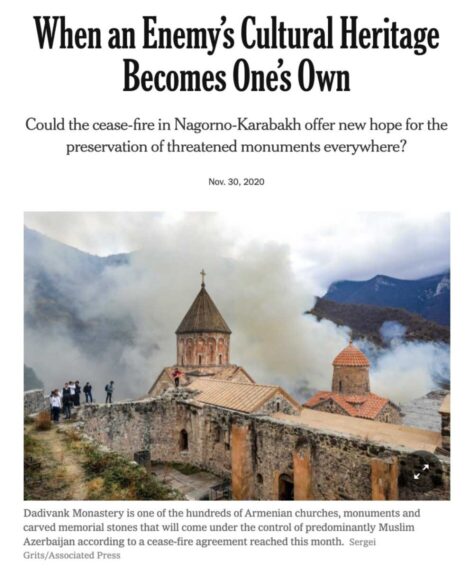Below is an excerpt from an article written for the new monograph of work by Hrair Sarkissian, The Other Side of Silence. Edited by Omar Khoelif and Theodor Ringborg, the book is published alongside a touring exhibition at Sharjah Art Foundation, Bonniers Konsthall, and the Bonnefanten.
from “Travel with Fear: Returning to Armenia with Hrair Sarkissian” (2021)
As I started work on this piece, a ceasefire was brokered in a territorial dispute between Armenia and neighbouring Azerbaijan. The latter was ultimately recognised as the victor and the keeper of a region known as Nagorno-Karabakh. When I brought this up with Hrair over the phone, he warned me of any attempt to understand what had transpired. There were too many layers to comprehend on such a small part of the Earth. Armenian villagers were burning their homes before departing lands once gained in previous conflicts, but now lost. Smoke and fumes mixed with the heavy fog that weaves through mountains and across lofty plains that appear as more pronounced versions of landforms also once called Armenia, farther west in current-day Turkey.
Hrair had visited this nook of land before it got folded back into Azerbaijan. Front Line (2008) captures his half-born proposal to feature both sides of a convoluted border. He never set foot in Azerbaijan. At the time of his visit, Nagorno-Karabakh was not a hot spot as it appeared in late 2020. It was rather a Pyrrhic victory splayed out as landscape. To go to this part of Armenia from the capital, Yerevan, was also a bureaucratic hassle, a registered visitation of no more than four days. Nagorno-Karabakh was more a terminus or outpost than a place. A direct-shot minibus delivered registrants there via a steep road carved into a black-forest mountain. Front Line features hyperreal headshots of surviving soldiers whose maimed bodies and broken souls were left behind in the region they had nearly died for. Meanwhile, the rest packed up and moved to Yerevan. Alive, these forsaken veterans are monumentalised in the installation as if in a memorial garden. In contrast to the close-up portraits, there are also broad, deep vistas, unflinchingly banal at first glance, but so often how views of Armenia are taken in, from a fought-for foreground towards a horizon that declares its inaccessibility. That horizon is Azerbaijan, which can be a destination only of the mind. Fighting had made the foreground Armenian, but it had also hemmed that vantage point into a besieged island. The foreground is the fighting zone of the past and present. The foothold defended, fought for to the death, then abandoned. And subsequently, in 2020, delivered in slow-cooking flames.

